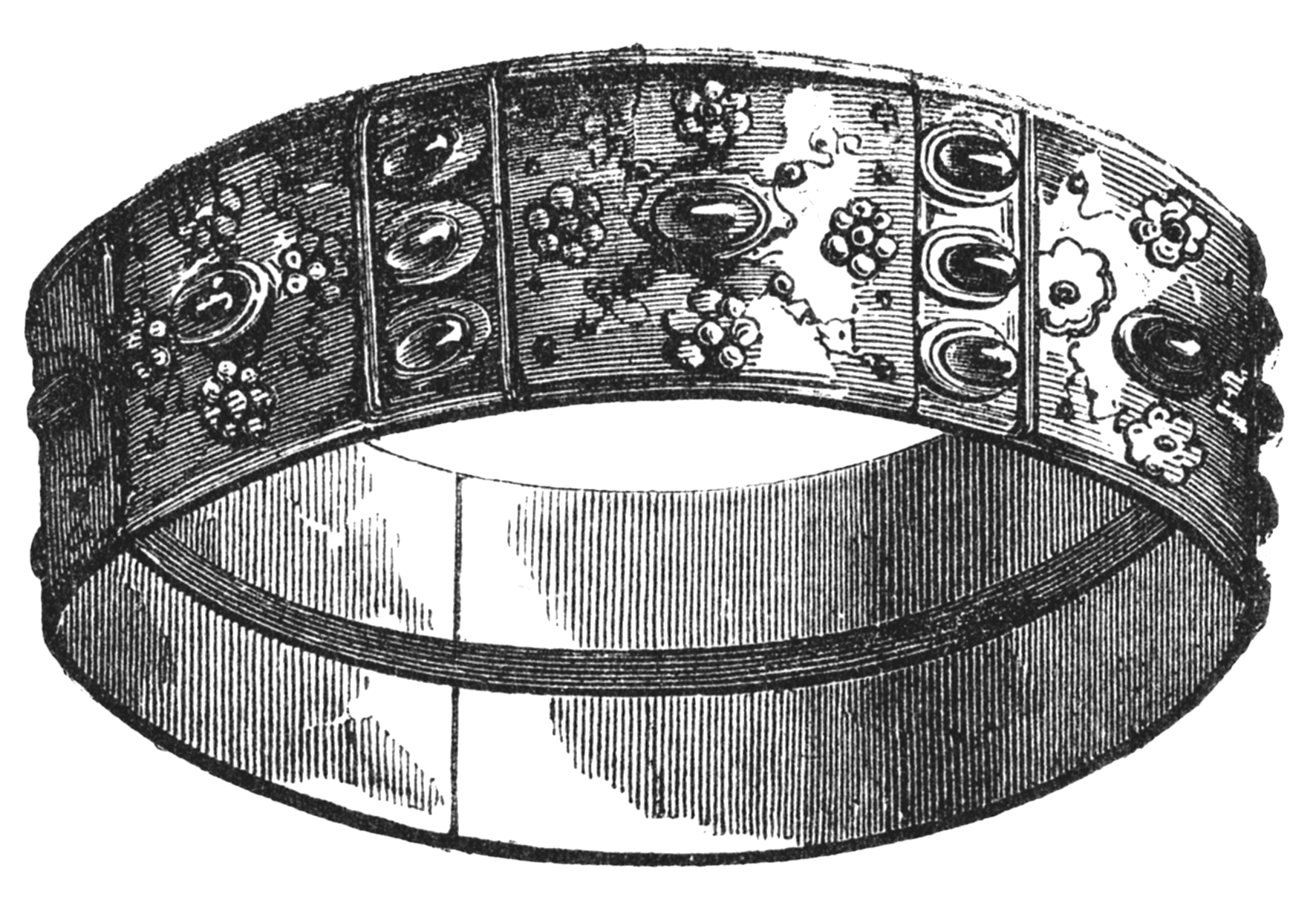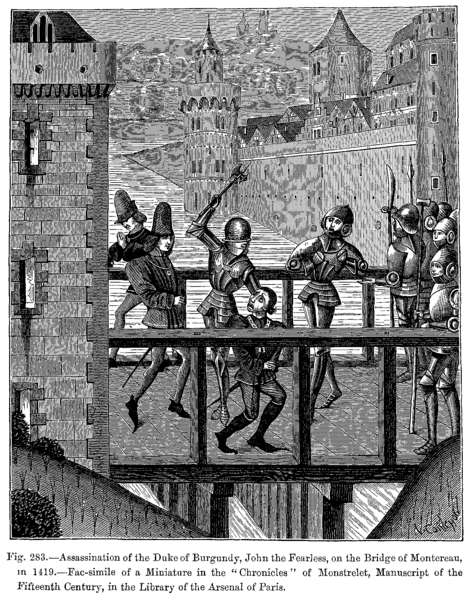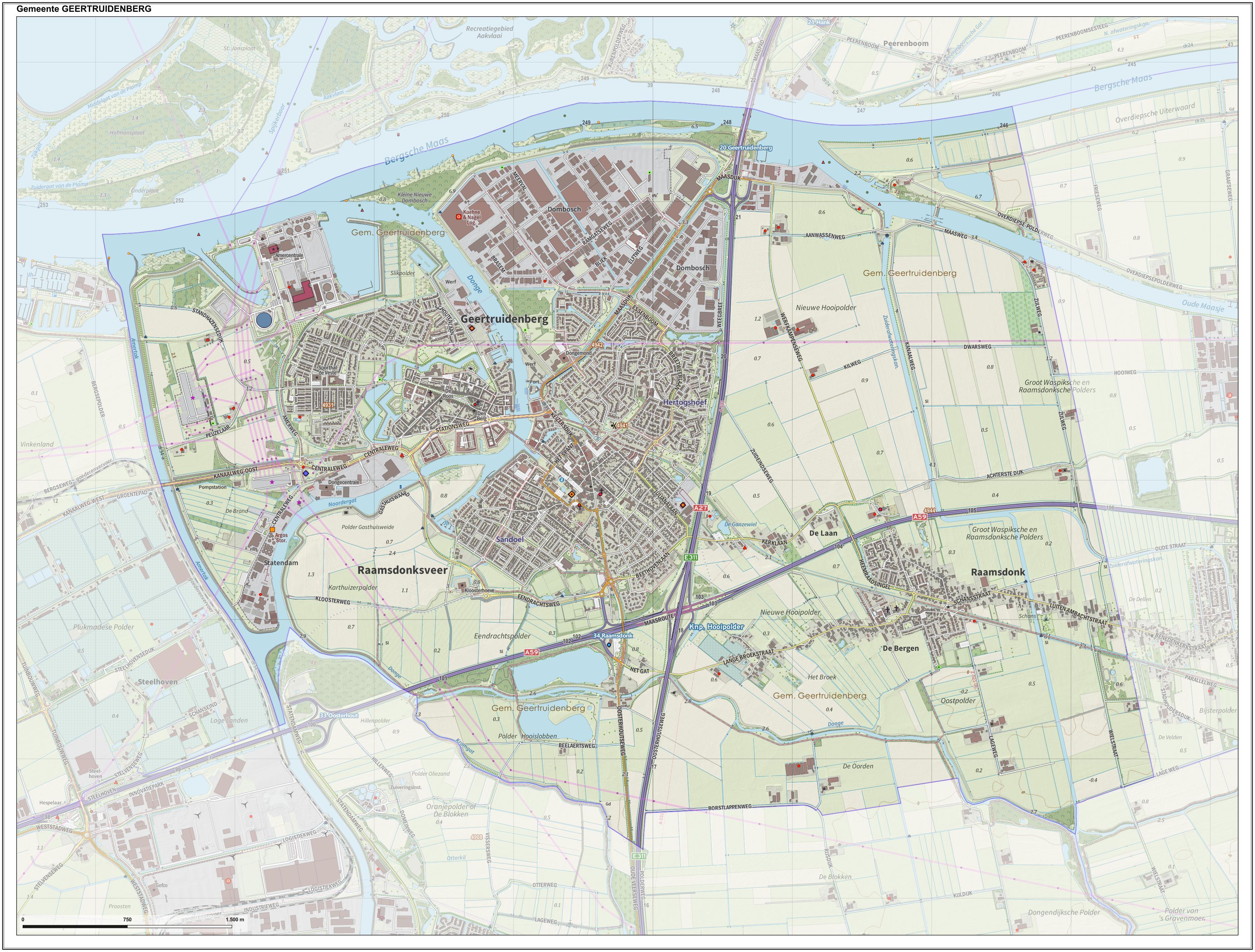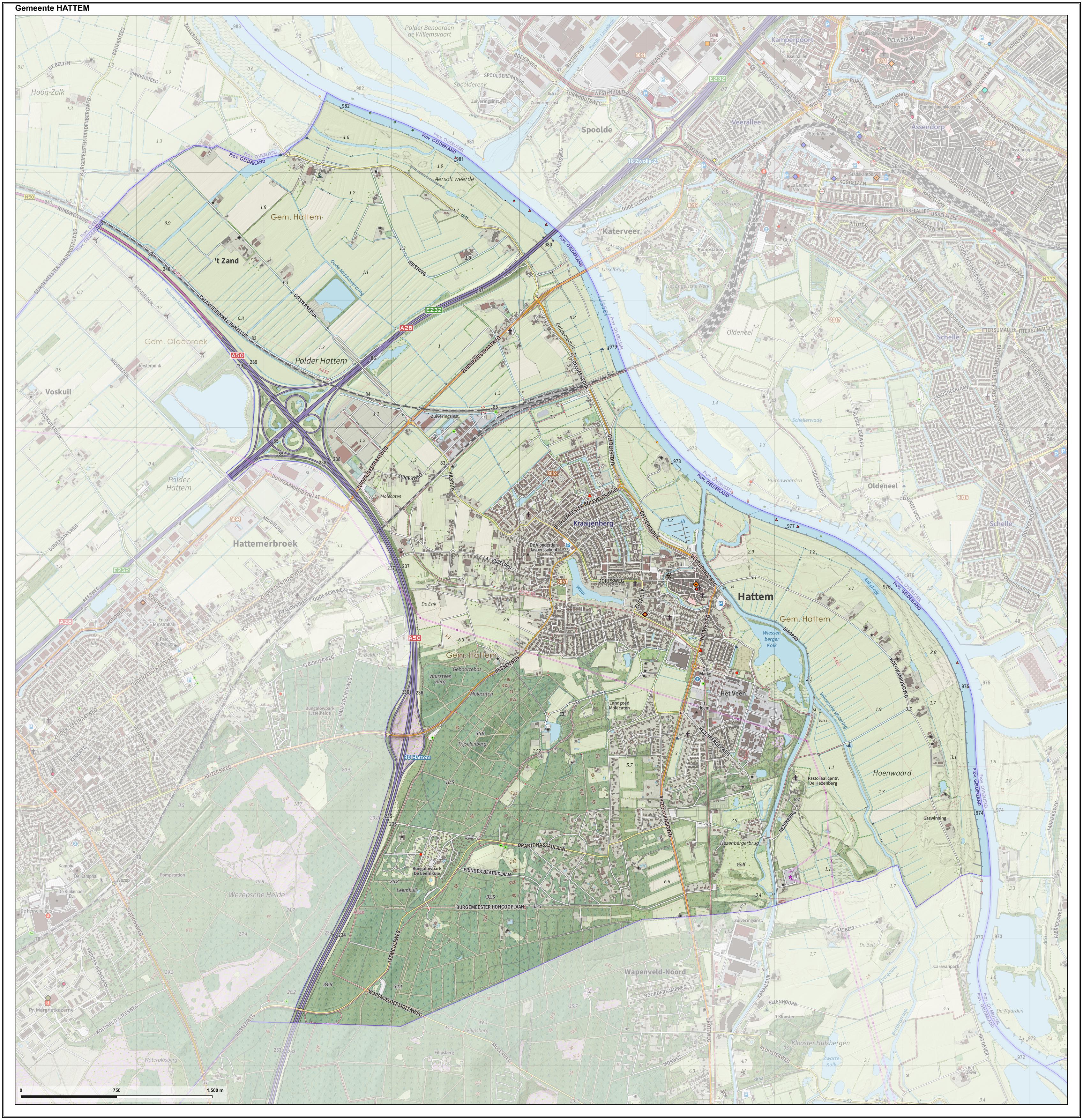|
Margaret Of Brieg
Margaret of Brieg (1342–1386) was a daughter of Ludwik I the Fair and his wife, Agnes of Sagan. She was Duchess consort of Bavaria by her marriage to Albert I, Duke of Bavaria. Family Margaret was the eldest of six siblings, her brother was Henry VII of Brzeg and her sister, Hedwig was married to Jan II of Oświęcim. Margaret's maternal grandparents were Henry IV the Faithful and Matilde of Brandenburg. Her paternal grandparents were Bolesław III the Generous and his first wife Margaret of Bohemia. Margaret of Bohemia was the youngest surviving child of Wenceslaus II of Bohemia and Judith of Habsburg. Judith was the youngest daughter of Rudolf I of Germany and Gertrude of Hohenberg. Marriage In Passau after 19 July 1353, Margaret and Albert were married. Albert kept mistresses and lovers, but during his reign, troubles erupted between parties because of a woman, Aleid van Poelgeest. People did not like her because she gained political influence which was resented. A f ... [...More Info...] [...Related Items...] OR: [Wikipedia] [Google] [Baidu] |
Duchess Consort Of Bavaria
There have been three kinds of Bavarian consorts in history, Duchesses, Electresses and Queens. Most consorts listed are Duchesses. The first ever consort of Bavaria was Waldrada in the 6th century. The final consort was Maria Theresia of Austria-Este in 1913. The longest serving House was the Wittelsbach Dynasty, who played a major role in Bavarian History. During the medieval period under the Wittelsbach Dynasty, Bavaria was split into two parts, Upper and Lower Bavaria. This meant that there may have been more than one Duchess of Bavaria at the same time, due to messy inheritance among heirs. Three of the break-away Wittelsbach families were: Landshut, Munich and Ingolstadt. Since 555 there have been 99 Bavarian consorts: 78 duchesses, 11 queens, 10 electresses and one margravine. The number doesn't add up because Elizabeth of Lorraine and Caroline of Baden, held two titles. There was a few consort that married twice usually their brothers-in-law. It was common for the rul ... [...More Info...] [...Related Items...] OR: [Wikipedia] [Google] [Baidu] |
Wenceslaus II Of Bohemia
Wenceslaus II Přemyslid ( cs, Václav II.; pl, Wacław II Czeski; 27 SeptemberK. Charvátová, ''Václav II. Král český a polský'', Prague 2007, p. 18. 1271 – 21 June 1305) was King of Bohemia (1278–1305), Duke of Cracow (1291–1305), and King of Poland (1300–1305). He was the only son of King Ottokar II of Bohemia and Ottokar's second wife Kunigunda. He was born in 1271, ten years after the marriage of his parents. Kunigunda was the daughter of Rostislav Mikhailovich, lord of Slavonia, son of a Grand Prince of Kiev, and Anna of Hungary, daughter of Béla IV of Hungary. His great-grandfather was the German king Philip of Swabia. Wenceslaus II was the grandfather of the Holy Roman Emperor, Charles IV. He was a member of the Přemyslid dynasty. Early years In 1276 Rudolf I, King of the Romans, placed Ottokar under the ban of the empire and besieged Vienna. This compelled Ottokar in November 1276 to sign a new treaty by which he gave up all claims to Austria and ... [...More Info...] [...Related Items...] OR: [Wikipedia] [Google] [Baidu] |
William VI, Count Of Holland
William II of Bavaria (5 April 1365—31 May 1417) was Duke of Bavaria-Straubing and count of Holland (listed as William VI), Hainaut (listed as William IV) and Zeeland. He ruled from 1404 until 1417, when he died from an infection caused by a dog bite. Biography William was a son of Albert I of Bavaria and Margaret of Brieg. William, allied with the Hooks, was in conflict with his father until 1394. In 1404 he succeeded him as count of Holland, Hainaut and Zeeland and duke of Bavaria-Straubing. In 1408 in the Battle of Othée William, Duke John the Fearless of Burgundy, and Duke Louis VII of Bavaria defeated the citizens of Liège who had revolted against William's brother John, the bishop of Liège. As a result, he was no longer, as count of Hainaut, obliged to pay homage to the bishop. William's reign was marked by internal strife within the county of Holland. In particular, Lord John V of Arkel supported William's enemies in Holland. William conquered Arkel in 1412, at ... [...More Info...] [...Related Items...] OR: [Wikipedia] [Google] [Baidu] |
John The Fearless
John I (french: Jean sans Peur; nl, Jan zonder Vrees; 28 May 137110 September 1419) was a scion of the French royal family who ruled the Burgundian State from 1404 until his death in 1419. He played a key role in French national affairs during the early 15th century, particularly in the struggles to rule the country for the mentally ill King Charles VI, his cousin, and the Hundred Years' War with England. A rash, ruthless and unscrupulous politician, John murdered the King's brother, the Duke of Orléans, in an attempt to gain control of the government, which led to the eruption of the Armagnac–Burgundian Civil War in France and in turn culminated in his own assassination in 1419. The involvement of Charles, the heir to the French throne, in his assassination prompted John's son and successor Philip to seek an alliance with the English, thereby bringing the Hundred Years' War to its final phase. John played an important role in the development of gunpowder artillery in E ... [...More Info...] [...Related Items...] OR: [Wikipedia] [Google] [Baidu] |
Cambrai
Cambrai (, ; pcd, Kimbré; nl, Kamerijk), formerly Cambray and historically in English Camerick or Camericke, is a city in the Nord (French department), Nord Departments of France, department and in the Hauts-de-France Regions of France, region of France on the Scheldt river, which is known locally as the Escaut river. A Subprefectures in France, sub-prefecture of the department, Cambrai is a town which had 32,501 inhabitants in 2018. It is in the heart of the urban unit of Cambrai with 46,772 inhabitants. Its functional area (France), functional area, a more extensive range, included 94,576 inhabitants in 2018.Comparateur de territoire: Aire d'attraction des villes 2020 de Cambra ... [...More Info...] [...Related Items...] OR: [Wikipedia] [Google] [Baidu] |
Dijon
Dijon (, , ) (dated) * it, Digione * la, Diviō or * lmo, Digion is the prefecture of the Côte-d'Or department and of the Bourgogne-Franche-Comté region in northeastern France. the commune had a population of 156,920. The earliest archaeological finds within the city limits of Dijon date to the Neolithic period. Dijon later became a Roman settlement named ''Divio'', located on the road between Lyon and Paris. The province was home to the Dukes of Burgundy from the early 11th until the late 15th centuries, and Dijon became a place of tremendous wealth and power, one of the great European centres of art, learning, and science. The city has retained varied architectural styles from many of the main periods of the past millennium, including Capetian, Gothic, and Renaissance. Many still-inhabited town-houses in the city's central district date from the 18th century and earlier. Dijon's architecture is distinguished by, among other things, '' toits bourguignons'' (Burgu ... [...More Info...] [...Related Items...] OR: [Wikipedia] [Google] [Baidu] |
Wenceslaus, King Of The Romans
Wenceslaus IV (also ''Wenceslas''; cs, Václav; german: Wenzel, nicknamed "the Idle"; 26 February 136116 August 1419), also known as Wenceslaus of Luxembourg, was King of Bohemia from 1378 until his death and King of Germany from 1376 until he was deposed in 1400. As he belonged to the House of Luxembourg, he was also Duke of Luxembourg from 1383 to 1388. Biography Wenceslaus was born in the Imperial city of Nuremberg, the son of Emperor Charles IV by his third wife Anna von Schweidnitz, a scion of the Silesian Piasts, and baptized at St. Sebaldus Church. He was raised by the Prague Archbishops Arnošt of Pardubice and Jan Očko of Vlašim. His father had the two-year-old crowned King of Bohemia in June 1363 and in 1373 also obtained for him the Electoral Margraviate of Brandenburg. When on 10 June 1376 Charles IV asserted Wenceslaus' election as King of the Romans by the prince-electors, two of seven votes, those of Brandenburg and Bohemia, were held by the em ... [...More Info...] [...Related Items...] OR: [Wikipedia] [Google] [Baidu] |
William I Of Gelders And Jülich
William is a masculine given name of Norman French origin.Hanks, Hardcastle and Hodges, ''Oxford Dictionary of First Names'', Oxford University Press, 2nd edition, , p. 276. It became very popular in the English language after the Norman conquest of England in 1066,All Things William"Meaning & Origin of the Name"/ref> and remained so throughout the Middle Ages and into the modern era. It is sometimes abbreviated "Wm." Shortened familiar versions in English include Will, Wills, Willy, Willie, Liam, Bill, and Billy. A common Irish form is Liam. Scottish diminutives include Wull, Willie or Wullie (as in Oor Wullie or the play ''Douglas''). Female forms are Willa, Willemina, Wilma and Wilhelmina. Etymology William is related to the German given name ''Wilhelm''. Both ultimately descend from Proto-Germanic ''*Wiljahelmaz'', with a direct cognate also in the Old Norse name ''Vilhjalmr'' and a West Germanic borrowing into Medieval Latin ''Willelmus''. The Proto-Germanic name is a ... [...More Info...] [...Related Items...] OR: [Wikipedia] [Google] [Baidu] |
Geertruidenberg
Geertruidenberg () is a city and municipality in the province North Brabant in the south of the Netherlands. The city, named after Saint Gertrude of Nivelles, received city rights in 1213 from the count of Holland. The fortified city prospered until the 15th century. Today, the municipality of Geertruidenberg also includes the population centres Raamsdonk and Raamsdonksveer. The municipality has a total area of and had a population of in . The city government consists of the mayor Willemijn van Hees and three aldermen. History Geertruidenberg is named after Saint Gertrude of Nivelles. In 1213, Sint Geertruidenberg (English: "Saint Gertrude's Mountain") received city rights from Count William I of Holland. The fortified city became a trade center, where counts and other nobility gathered for negotiations. The Hook and Cod wars in 1420 and the Saint Elizabeth's flood in 1421 ended the prosperity of the city. During the Eighty Years War the city was captured by an English, F ... [...More Info...] [...Related Items...] OR: [Wikipedia] [Google] [Baidu] |
Hattem
Hattem () is a municipality and a town in the eastern Netherlands. The municipality had a population of in . The municipality includes the hamlet of 't Zand. Name origin The name “Hattem” is a typical farmyard name. The exact origin of “Hattem” is yet unclear. In general two explanation exist. Hattem would be the ‘heem’ (home) of a people who belong to the tribe of Chattuarii (or Hattuarii or Hatten). A second origin could refer to the leader of a people under the leader Hatto. This fits with the fact that a lot of farmyard names are deduced from persons names. History A document referring to Hattem is found is dated around 800. This document is the Codex Laureshamensis, in which the settlement Hattem is mentioned because two farmhouses in this place are donated to the Lorsch abbey. Established as parish Despite this early statement, no church or chapel was built in Hattem. In 1176 Hattem became a parish (‘kerspel’). The chapel, measuring 17,5 by 9,5 meter, was ... [...More Info...] [...Related Items...] OR: [Wikipedia] [Google] [Baidu] |
The Hague
The Hague ( ; nl, Den Haag or ) is a city and municipality of the Netherlands, situated on the west coast facing the North Sea. The Hague is the country's administrative centre and its seat of government, and while the official capital of the Netherlands is Amsterdam, The Hague has been described as the country's de facto capital. The Hague is also the capital of the province of South Holland, and the city hosts both the International Court of Justice and the International Criminal Court. With a population of over half a million, it is the third-largest city in the Netherlands, after Amsterdam and Rotterdam. The Hague is the core municipality of the Greater The Hague urban area, which comprises the city itself and its suburban municipalities, containing over 800,000 people, making it the third-largest urban area in the Netherlands, again after the urban areas of Amsterdam and Rotterdam. The Rotterdam–The Hague metropolitan area, with a population of approximately 2.6&n ... [...More Info...] [...Related Items...] OR: [Wikipedia] [Google] [Baidu] |
Passau
Passau (; bar, label=Central Bavarian, Båssa) is a city in Lower Bavaria, Germany, also known as the Dreiflüssestadt ("City of Three Rivers") as the river Danube is joined by the Inn from the south and the Ilz from the north. Passau's population is approx. 50,000, of whom about 12,000 are students at the University of Passau, renowned in Germany for its institutes of economics, law, theology, computer science and cultural studies. History In the 2nd century BC, many of the Boii tribe were pushed north across the Alps out of northern Italy by the Romans. They established a new capital called Boiodurum by the Romans (from Gaulish ''Boioduron''), now within the Innstadt district of Passau. Passau was an ancient Roman colony called Batavis, Latin for "for the ''Batavi''." The Batavi were an ancient Germanic tribe often mentioned by classical authors, and they were regularly associated with the Suebian marauders, the Heruli. ''Batavis'' (Passau-Altstadt) was a Roman castrum in ... [...More Info...] [...Related Items...] OR: [Wikipedia] [Google] [Baidu] |








